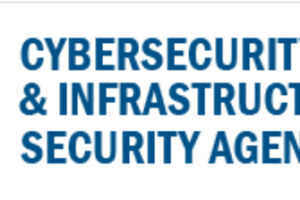The rise of digital technologies and ways of working offers extraordinary new opportunities to further global sustainable development and achieving the Sustainable Development Goals, from increasing economic resilience to mitigating the damage of COVID-19 and delivering more effective public services. Yet not everyone is equally able to take advantage of these opportunities, particularly as the rapid pace of digital change places further demands on resource-constrained governments and societies.
Bridging the world's digital divide is increasingly urgent, as those who left out of today's digital transformation are in danger of falling further behind. This means ensuring that digital services are available everywhere, as well as affordable and accessible to all.
To address this key issue, the International Telecommunication Union (ITU) and the United Nations Development Programme (UNDP) have launched a Joint Facility for Digital Capacity Development to support those not currently served by existing digital capacity development resources or channels.
Supporting UN Efforts in Digital Capacity Development
The Joint Facility stands in support of the UN Secretary-General's Roadmap for Digital Cooperation, which calls for "a broad multi-stakeholder network to promote holistic, inclusive approaches to digital capacity-building for sustainable development, including a new joint facility for digital capacity development, which will be led by ITU and UNDP."
People and communities currently underserved in terms of digital capacity will benefit from more efficient and effective support from the ITU/UNDP Joint Facility, which aims to make digital opportunities accessible to all.
"Robust and effective digital capacity building underlines the fulfilment of the Secretary-General's Roadmap for Digital Cooperation, by supporting countries in their efforts to harness the full potential of digital technology as part of their digital futures", said Assistant Secretary-General Maria Francesca Spatolisano, Officer-in-Charge at the UN Office of the Envoy on Technology.
"The Joint Facility will further strengthen our collective effort to equip people with the needed digital skills, literacy and capabilities, alongside with the multi-stakeholder network for digital capacity development envisioned in the roadmap."
The Joint Facility aims to:
- direct stakeholders to relevant existing ITU/UNDP resources, including digital literacy and skills training;
- identify areas of unmet demand for digital capacity development initiatives and work with end users to develop new interventions when needed;
- identify patterns and trends in unmet stakeholder needs; and
- direct strategic, operational, and programmatic support in executing digital strategies, capacity development initiatives, or other high-priority operational areas for partners.
Digital capacity must be strengthened on both the local and international levels to enable inclusive digital and societal transformation.
While governments are the main target audience, other groups requiring digital capacity support will also benefit from the services offered by the Joint Facility.
Bringing UN Agencies Together for Meaningful Change
The Joint Facility cements the partnership between ITU and UNDP to drive digital capacity development, and intends to have a new single structure facilitating joint resourcing, roles, and responsibilities.
Through its Development Sector, ITU provides direct assistance and capacity development initiatives to bridge the digital divide, promote digital inclusion and facilitate digital transformation for all.
"Making adequate capacity development tools available to all is more important than ever to bridge the digital divide and connect half of the world's population that are still offline," said Doreen Bogdan-Martin, Director of ITU's Telecommunication Development Bureau.
"There are many aspects to developing digital skills apart from the actual training. Through the Joint Facility, we will be able to assist countries across the digital skills development value chain from assessing digital capacity needs, advising on digital strategies, and even helping with procurement and raising funds for digital development. We are incredibly excited to work together with the UNDP towards this."
UNDP's wide field presence and topic expertise will help match key local context to relevant digital solutions.
"The lack of sufficient digital skills is a major barrier to reaping the benefits of digitalization and threatens to leave the most marginalized behind," said Robert Opp, UNDP's Chief Digital Officer. "The UNDP is proactively investing in the key area of digital capacity building so that we can all take advantage of digital opportunities together."
While building on existing collaboration between the two agencies, the Joint Facility also paves the way for wider, longer-term collaboration between the UNDP and ITU.
More information about the Joint Facility can be found at digital-capacity.org.
[source:ITU]




